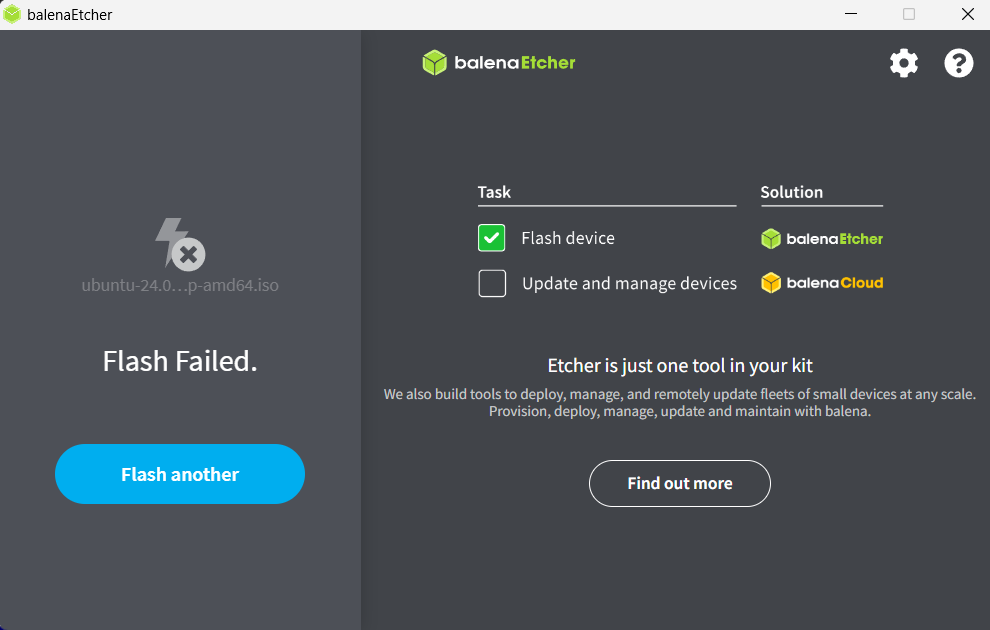How to fix Balena Etcher errors 5@0101000F and 1B1@0101000F / Balena Etcher killed my USB stick
- Jun 9, 2024
I recently purchased a USB stick so that I could try out a few different Linux Live images. Most of the tutorials recommend Balena Etcher to create the bootable USB stick.
The first and second flash (Fedora 14, then PopOS 22.04) with Balena Etcher worked well. I then tried Ubuntu 24.04 and received a “Flash Failed” error:

I tried re-flashing the two previous images, and now they fail too.
This didn’t make any sense. Was my USB stick faulty? Did the repeated flashing somehow damage it? Did Balena Etcher kill my USB stick? Is my USB stick bricked?
There is an easy way to fix this. Read on to find out.